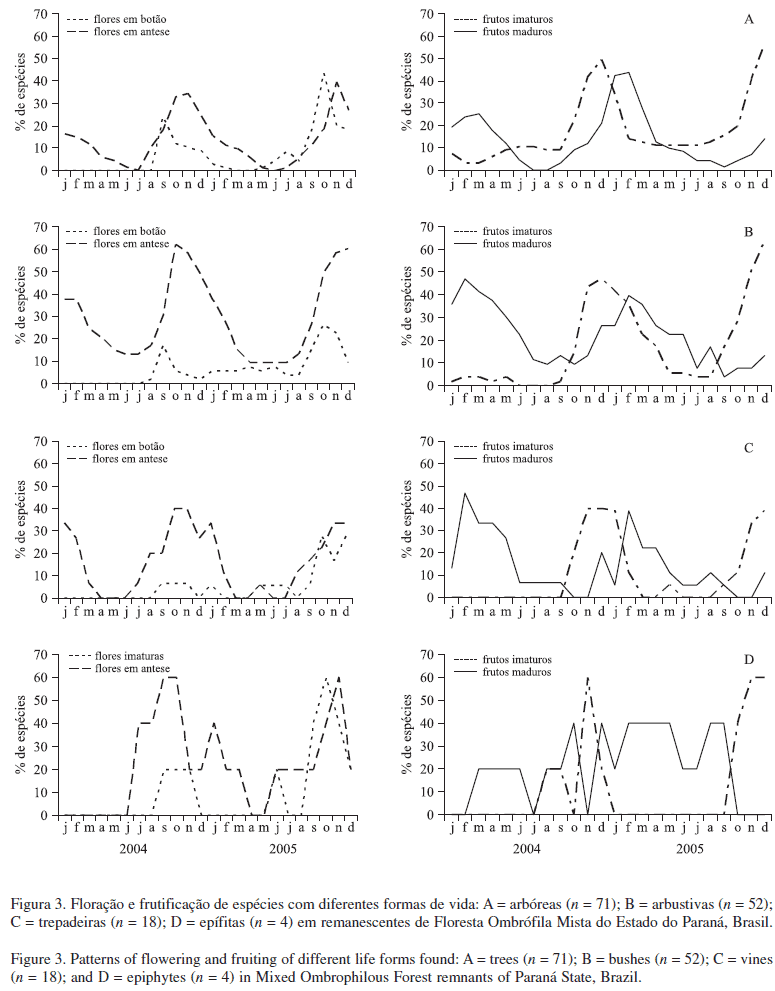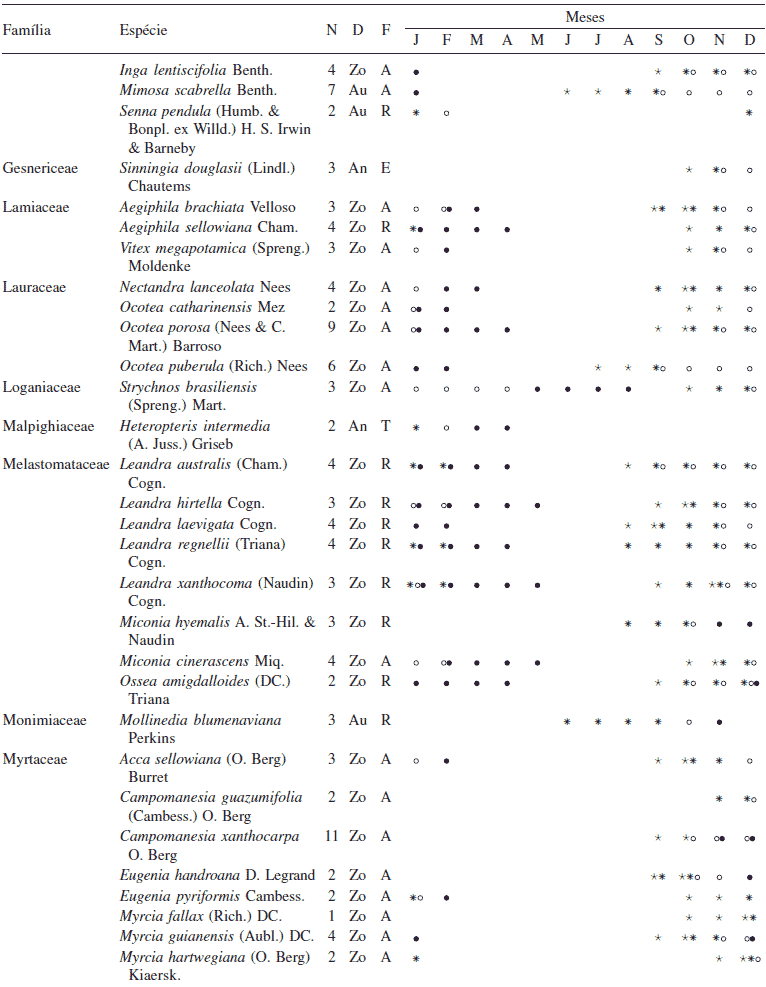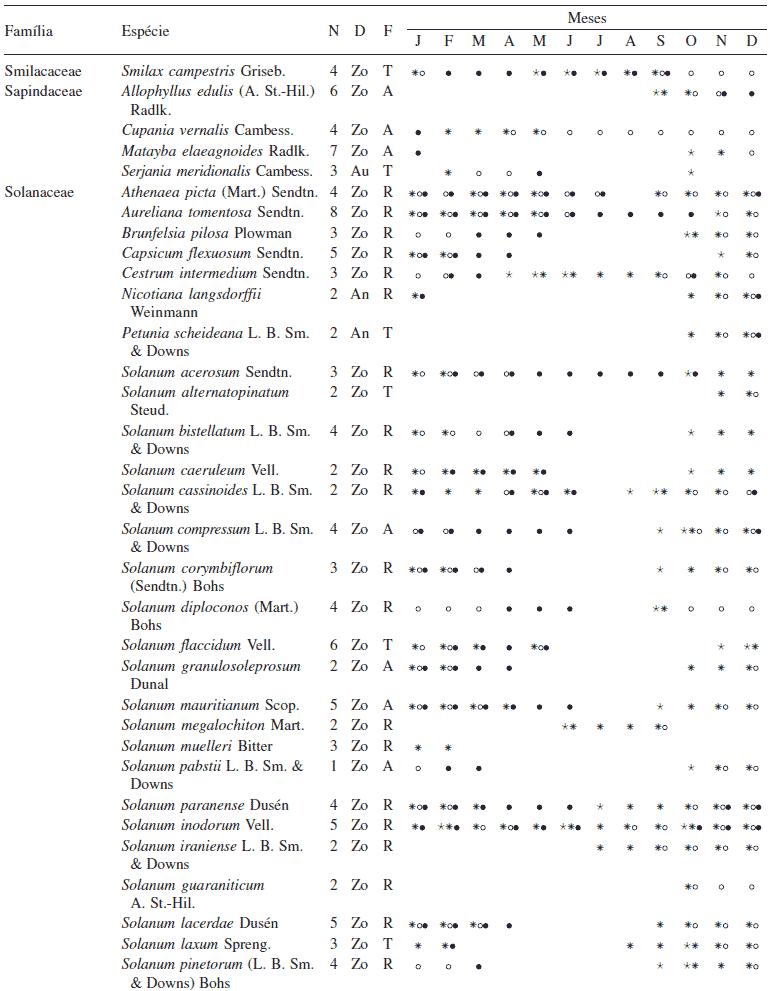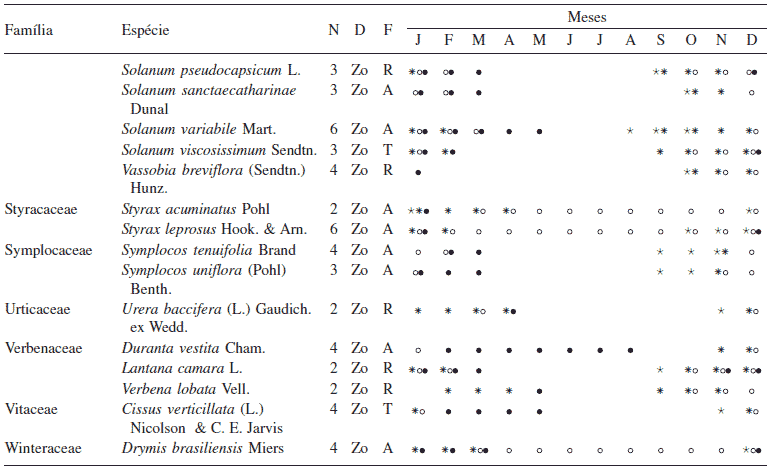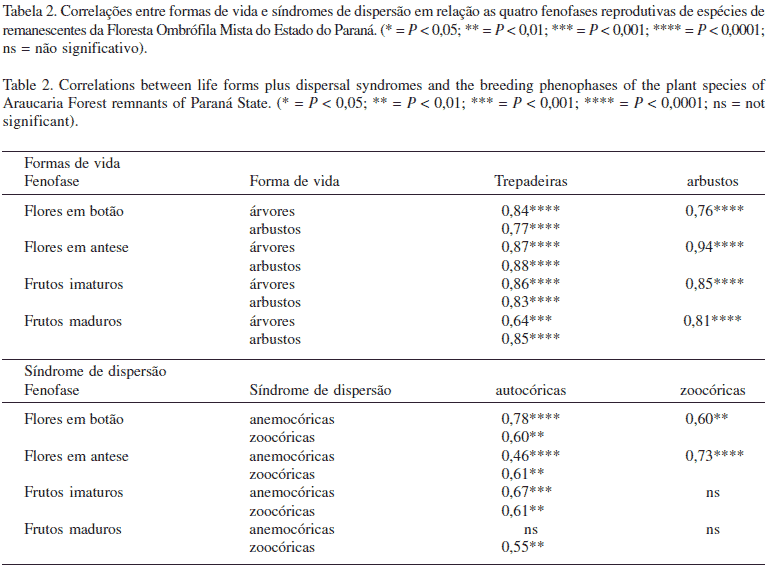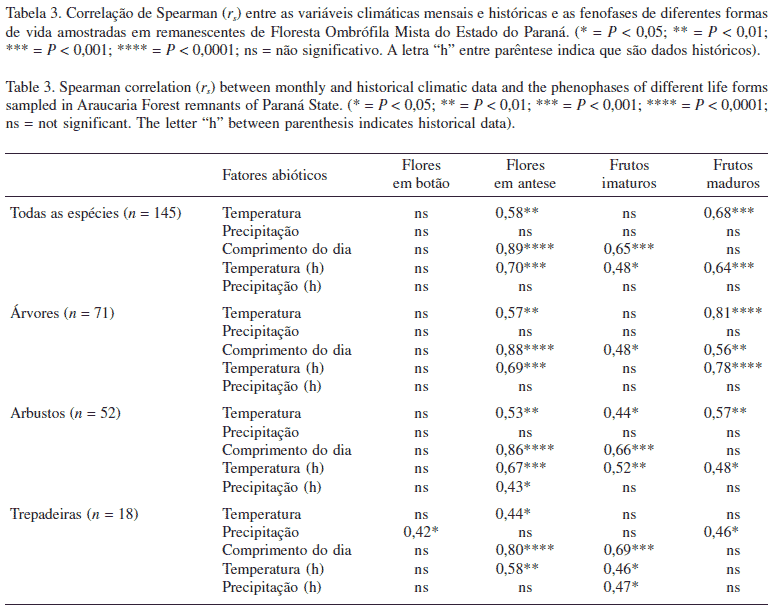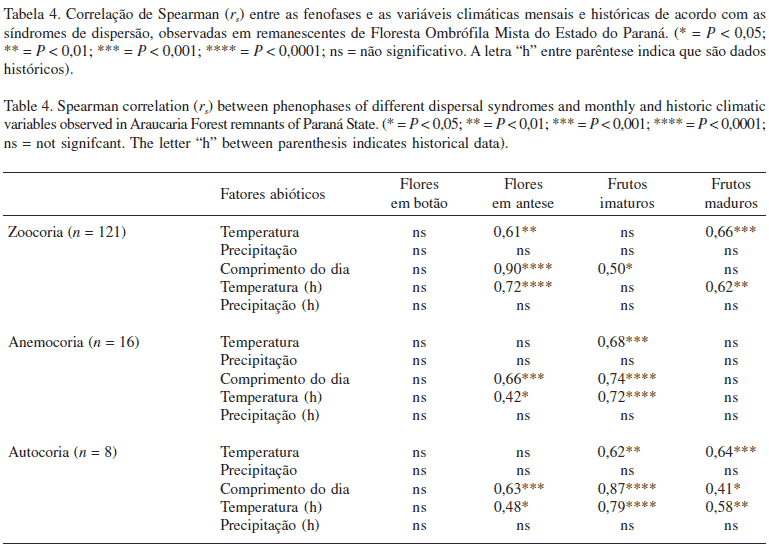The Mixed Ombrophilous Forest (FOM) or Araucaria Forest, vegetation that occupies regions with a highly seasonal climate subject to frost, used to cover 40% of Paraná State. Nowadays, however, there is less than 1% of advanced and well conserved FOM covering this State. This study presents the reproductive phenological patterns (flowering and fruiting) of the plant species found in FOM fragments located in three municipalities of Paraná State in order to subside restoration activities. Monthly phenological observations in 543 individuals of 145 species, representing several life forms (71 trees, 52 bushes, 18 vines and four epiphytes) were conducted between January 2004 and December 2005 employing the activity index. Flowering was recorded mainly between September and December, with a peak in October and November (68 species), followed by fruiting, which was concentrated between December and April, peaking in February (61 species). During the coldest months (June to August), the number of species with flowers or fruits was very low, with less than five species per phenophase. The availability of araucaria (Araucaria angustifolia (Bertol.) Kuntze) seeds varied between the years, but usually occurred between April and September. Significant correlations between phenophases and some abiotic factors, especially day length and temperature, were found. Therefore, plant species of the FOM proved to be highly seasonal, with periods of high and low flowering and fruiting activity, as consequence of the climatic seasonality, characteristic of the study region.
Araucaria angustifolia; Araucaria forest; flowering; fruiting; seasonal breeding



